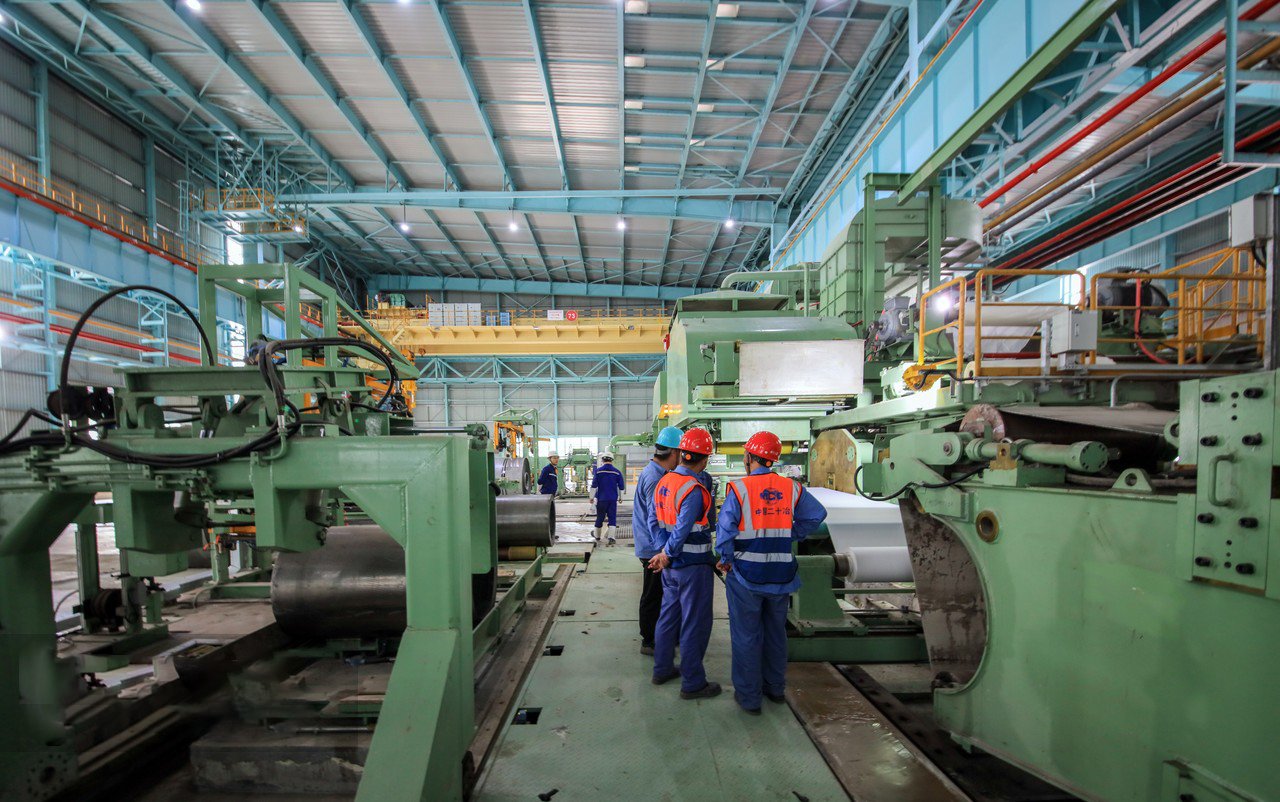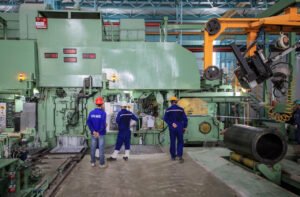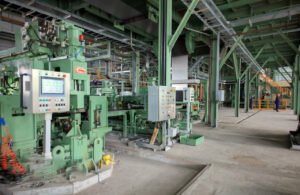From Inquiry to Delivery: How MFY Shipped 500 MT Stainless Steel Sheet to Brazil in 20 Days

Facing an impossible project deadline with your supply chain at a standstill? The panic is real when your international suppliers quote lead times of weeks or months, jeopardizing project timelines and incurring massive penalties. You need a partner who operates at the speed of your business.
MFY achieved a 20-day delivery of 500 metric tons of stainless steel sheets to Brazil by leveraging its integrated supply chain. This involved immediate inventory allocation, expedited production scheduling, strategic logistics partnerships, and a proactive documentation process to ensure seamless, rapid order fulfillment from inquiry to arrival.
As the Global Business Director at MFY, I’ve seen firsthand how supply chain delays can derail even the best-laid plans. This isn't just a hypothetical problem; it's a constant threat in the global construction and manufacturing sectors. But what if you could compress a typical two-month delivery schedule into less than three weeks?
This is the story of how we did just that for a major construction client in Brazil. It’s a testament to a philosophy that redefines what’s possible in steel exporting. This case goes beyond logistics; it’s about a system built for agility and resilience. Industry benchmarks for special production runs and shipment to South America often hover around 60 to 75 days. We shattered that expectation, demonstrating that with the right partner, unprecedented speed isn't an anomaly—it's a capability.
Initial Client Inquiry: How Was the Need for Stainless Steel Sheets Communicated?
Have you ever sent an urgent RFQ into the void, unsure if you'd get a response in time? For a major Brazilian contractor, this fear was palpable. They needed 500 metric tons of stainless steel sheets for a time-sensitive infrastructure project, and their current suppliers couldn't deliver.
The need was communicated via a direct email inquiry to our sales department, outlining the material grade (316L stainless steel), dimensions, quantity (500 MT), and, most critically, a required delivery-to-port date in Brazil that was only 25 days away, making time the central requirement.
I remember the email landing in our system late on a Tuesday evening. It came from a purchasing manager at a large Brazilian construction firm we'll call "Construtora Atlântico." The message was brief but packed with urgency. They were in the final phase of a major public transportation project, and their original material supplier had failed. They were facing a hard deadline that, if missed, would trigger significant contractual penalties. They needed 500 metric tons of 316L stainless steel sheets, cut to specific dimensions, and they needed it on site in what seemed like an impossible timeframe. The tone of the email wasn't just that of a standard request for quotation; it was a lifeline. They weren't just shopping for a price; they were searching for a miracle. It was immediately clear that our response couldn't be a standard quote with a standard lead time. It had to be a comprehensive solution that addressed their primary pain point: time. This inquiry was a test of our agility and the very essence of our brand promise.
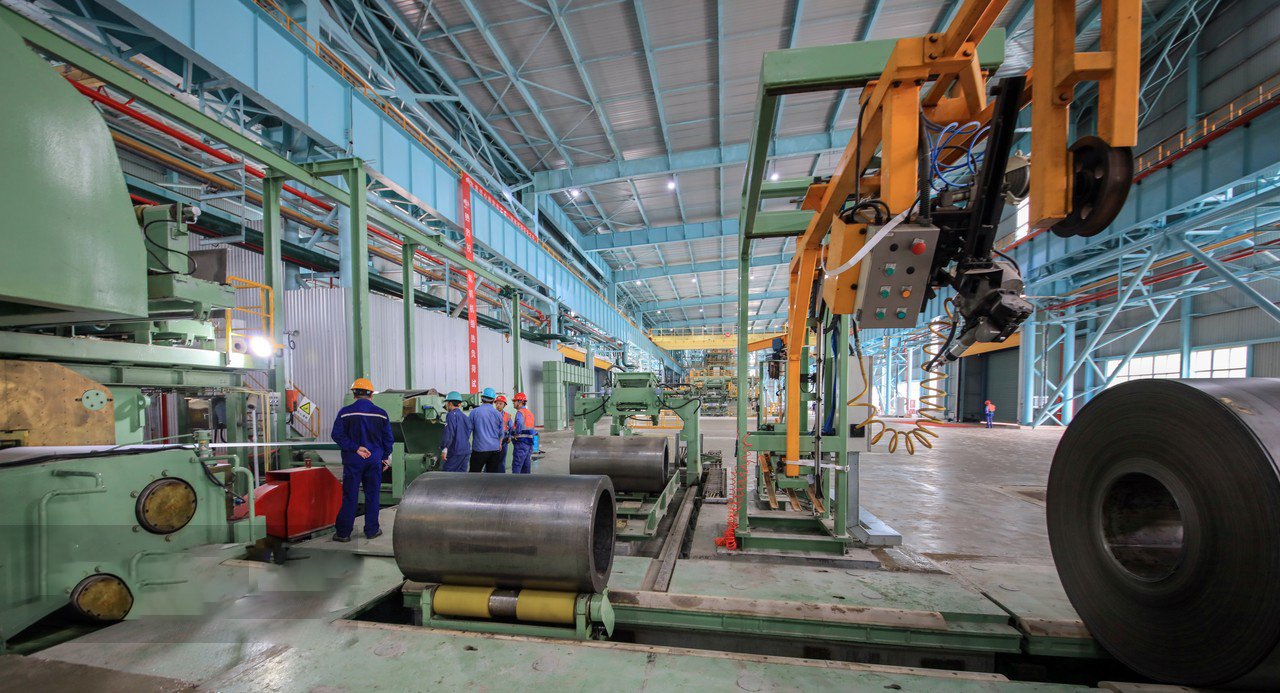
Responding to such a high-stakes inquiry required more than just a quick reply. It demanded the immediate mobilization of our internal systems and a deep understanding of the client's underlying crisis. The initial communication was the starting pistol for a race against time, and how we handled those first few hours would determine the project's feasibility. Our approach was built on three pillars: rapid internal assessment, a consultative communication style, and translating their urgent need into a viable operational blueprint.
Decoding the Request and Assessing Feasibility
The moment the inquiry arrived, our digital systems flagged it for high urgency based on keywords like "urgent," "deadline," and the specified tonnage. Within 30 minutes, it was on my desk and simultaneously routed to the heads of production and logistics. The first step wasn't to quote a price, but to conduct a rapid, internal feasibility study. Our integrated software system, which connects sales, inventory, and production, was our most powerful tool. We immediately checked our existing inventory of 316L raw coils. Did we have the 500 MT on hand? The system showed we had approximately 350 MT in our warehouse that matched the required chemical composition. This was a crucial piece of information. It meant we wouldn't have to start from scratch.
Simultaneously, I tasked our production head with evaluating the capacity of our cold-rolling and cutting lines. Could we process the existing 350 MT and produce the remaining 150 MT within a 7-day window without causing major disruptions to our other client commitments? He ran a simulation, confirming it was challenging but achievable by running three dedicated overnight shifts.
This initial assessment, completed in less than two hours, transformed the client's desperate request from an impossibility into a complex but solvable logistical puzzle. We could now respond not with a vague "we'll look into it," but with a confident "yes, this is possible, and here's how."
A Consultative Communication Strategy
Our first communication back to Construtora Atlântico was not a proforma invoice, but a phone call. I personally called the purchasing manager who had sent the email. My goal was twofold: to convey our seriousness and to gather more nuanced information than an email could provide. I explained that we had assessed their request and believed we could meet their deadline. The relief in his voice was immediate. This human connection instantly built a level of trust that no email chain could replicate.
During the call, I transitioned from a potential supplier to a consultant. I asked clarifying questions: "Are there any acceptable tolerances on the dimensions? Is the 316L grade requirement due to corrosion resistance for a specific environmental exposure?" He explained the sheets were for cladding a new metro station in a coastal city, making the corrosion resistance of 316L non-negotiable. He also confirmed the dimensions were critical for the prefabricated mounting brackets.
This dialogue allowed us to understand the why behind the what. It confirmed there was no flexibility on the material grade but helped us understand the application's context. This consultative approach assured the client that we were not just order-takers, but partners invested in their project's success. It laid the groundwork for the seamless cooperation that would be required in the coming days.
Translating Urgency into an Actionable Plan
Following the call, we sent a follow-up email that was far more than a quote. It was a preliminary action plan. It outlined the exact schedule: Days 1-2 for order confirmation and payment; Days 2-8 for production and processing; Day 9 for inland transport to the Port of Shanghai; and an estimated 10-12 days for ocean freight to the Port of Santos, Brazil. We specified the vessel type we would target and the logistics partner we would engage.
This wasn't just a promise; it was a transparent roadmap. We detailed our two-pronged approach: immediately allocating the 350 MT from our existing stock and scheduling the remaining 150 MT for priority production. This level of detail did two things: it demonstrated our expertise and gave the client the tangible evidence they needed to secure internal approval for what would be a significant, expedited order.
By turning their initial, panicked inquiry into a structured, actionable plan within the first 12 hours, we didn't just respond to their need; we took control of their crisis and started paving the path to a solution.
MFY had partial inventory availableTrue
The text confirms MFY had 350 MT of the required 316L stainless steel in stock, which was crucial for meeting the tight deadline.
Client needed 316L for inland applicationFalse
The stainless steel was actually needed for a coastal metro station project, where 316L's corrosion resistance was critical.
What Measures Were Taken to Confirm the Order Specifications and Requirements?
Ever had a major order derailed by a tiny misunderstanding in the specifications? A misplaced decimal or a wrong grade can lead to catastrophic waste. For a 500 MT order on a 20-day timeline, there was absolutely no room for error.
We confirmed specifications by creating a detailed Technical Specification Sheet (TSS) for client sign-off, which included grade (316L), thickness (with ±0.03mm tolerance), dimensions, and surface finish. A formal Proforma Invoice (PI) was issued, legally binding these technical details to the commercial terms.
Once we had a green light from Construtora Atlântico that our proposed timeline was viable, we moved into the most critical phase: meticulous confirmation. A verbal agreement or an email chain is not enough when dealing with an international shipment of this value and urgency. Any ambiguity could lead to the wrong material being produced or, worse, being rejected by Brazilian customs, which would completely shatter the timeline. I convened a "sprint team" consisting of a sales coordinator, a technical specialist from our mill, and a logistics expert. Their sole focus was to create an ironclad, mutually understood set of specifications that would serve as the single source of truth for the entire operation. We operated under the principle of "measure twice, cut once," but on a massive, industrial scale. We drafted a comprehensive document that went beyond a standard order form, including everything from chemical composition ranges to packaging requirements for the long sea voyage. This wasn't just about paperwork; it was about risk mitigation and building a foundation of precision for the high-velocity execution to follow.

Ensuring absolute clarity on a multi-million-dollar order that needs to be delivered in under three weeks requires a near-fanatical attention to detail. The confirmation stage is where speed must be balanced with precision. A single mistake here would not just cause a delay; it would cause a complete failure. Our process for this was rigorous, involving a multi-layered approach that combined technical documentation, financial formalization, and proactive regulatory compliance to leave nothing to chance.
The Technical Specification Sheet (TSS) as a Pact
The foundation of the confirmation process was the Technical Specification Sheet (TSS). This is a standard MFY document, but for this order, we enhanced it with extra layers of detail. It wasn't just a list of properties; it was a pact between our production team and the client's engineering team. The TSS began with the basics: Grade 316L Stainless Steel Sheet. But we went deeper, specifying the ASTM A240 standard it would conform to and providing the guaranteed chemical composition range, with particular emphasis on the molybdenum content (min. 2.0%) crucial for the 316L grade's superior corrosion resistance.
The next section detailed the physical dimensions: thickness, width, and length. Crucially, we didn't just state the nominal thickness; we defined the tolerance—in this case, ±0.03mm, a precision standard that gave the client confidence in the material's consistency for cladding installation. We also specified the required surface finish (a No. 2B finish) and the protective measures, including the application of a 70-micron laser PVC film on one side to prevent any scratches during transit and installation.
We submitted this TSS to Construtora Atlântico's lead engineer for review and signature. This step was non-negotiable. It ensured that the people who would ultimately be using the material had formally verified that our production plan matched their project's engineering requirements perfectly. This signed TSS became an appendix to the commercial contract, legally binding us to deliver exactly what was promised.
The Proforma Invoice: More Than Just a Bill
With the technical specifications locked in, the next step was to issue a Proforma Invoice (PI). In international trade, a PI is far more than just a preliminary bill; it's a foundational document for the client. It formalizes the offer and provides the details they need to open a Letter of Credit (L/C) or arrange a Telegraphic Transfer (T/T). Given the urgency, we agreed on a 30% T/T payment upfront to initiate production, with the 70% balance against the Bill of Lading (B/L).
Our PI was meticulously crafted. It referenced the signed TSS in its description of goods, creating a direct link between the financial and technical aspects of the agreement. It clearly detailed the trade terms (CIF, Port of Santos, Brazil - Incoterms 2020), the total volume in metric tons, the price per ton, and the total value. We also included our full banking details, company registration numbers, and export license information to expedite the payment process on their end.
By providing a clean, comprehensive, and accurate PI within hours of the TSS sign-off, we enabled their finance department to act immediately. The 30% advance payment was in our account within 24 hours. This immediate financial commitment was the final green light. The production clock had officially started ticking.
Proactive Navigation of Brazilian Import Requirements
A critical, and often overlooked, step is anticipating the import requirements of the destination country. Brazilian customs are known for their stringency. A shipment can be delayed for weeks due to minor documentation discrepancies. Our logistics team, with extensive experience shipping to South America, took a proactive approach. While the production team was preparing the coils, the logistics team was preparing the documentation.
We contacted Construtora Atlântico's designated customs broker in Brazil. This three-way communication between MFY, the client, and their broker was vital. The broker provided us with a checklist of all required documents and the specific formatting for each. This included the Commercial Invoice, Packing List (with weights in kg for each bundle), Certificate of Origin, and Mill Test Certificate (MTC).
The table below illustrates the difference between a standard vs. proactive documentation approach for a time-sensitive shipment to a country like Brazil. Our proactive stance was key to ensuring the 20-day timeline was not jeopardized at the final hurdle.
| Document Process | Standard Approach (Reactive) | MFY's Proactive Approach |
|---|---|---|
| Customs Broker Contact | Wait for client to provide details after shipping. | Contact broker before the ship has even been booked. |
| Document Preparation | Prepare documents after cargo has sailed. | Prepare draft documents while material is in production. |
| HS Code Verification | Use standard HS code; risk of dispute at destination. | Verify the specific HS Code with the destination broker to ensure alignment. |
| Packing List Detail | Provides total weight only. | Details net and gross weight for each package/bundle. |
| Submission | Documents sent to client after sailing. | Draft documents sent to both client and broker for pre-approval before sailing. |
This preemptive collaboration ensured that when the ship carrying the 500 tons of steel departed Shanghai, a complete and pre-approved set of documents was already in the hands of the Brazilian customs broker, ready for immediate submission upon the vessel's arrival.
TSS included 316L grade detailsTrue
The Technical Specification Sheet explicitly specified Grade 316L with its critical 2.0% molybdenum content for corrosion resistance.
PI preceded production startFalse
Production only commenced after receiving the 30% advance payment, which was triggered by the client's acceptance of the Proforma Invoice.
Step-by-Step Exploration: Coordinating Production and Inventory for Fast Delivery
The clock is ticking on a massive order. Do you have the inventory, or can you produce it fast enough? For this 500 MT shipment, we couldn't choose one. We had to do both, simultaneously, with perfect coordination to make the impossible happen.
MFY achieved fast delivery by executing a parallel strategy: 350 MT of matching 316L coils were immediately allocated from our existing inventory for cutting, while the remaining 150 MT were fast-tracked for priority production, with both streams converging at the packaging stage within seven days.
This was the ultimate test of our integrated supply chain. It's one thing to have inventory and another to have production capacity. It's something else entirely to leverage both in perfect harmony under extreme time pressure. The plan was simple on paper but incredibly complex in execution. We essentially split the order into two streams. Stream A was "Inventory to Sheet," focusing on processing the 350 MT of 316L coils we already held. Stream B was "Raw to Sheet," the emergency production run for the final 150 MT. My role shifted to that of an orchestra conductor, ensuring every section—inventory management, cold-rolling, annealing, leveling, and cutting—played its part precisely on cue. The entire MFY group, from our warehousing team to our mill operators, rallied around this single project. The energy was palpable; we were all in, committed to turning this challenge into a showcase of our capabilities. This wasn't just another order; it became a mission.
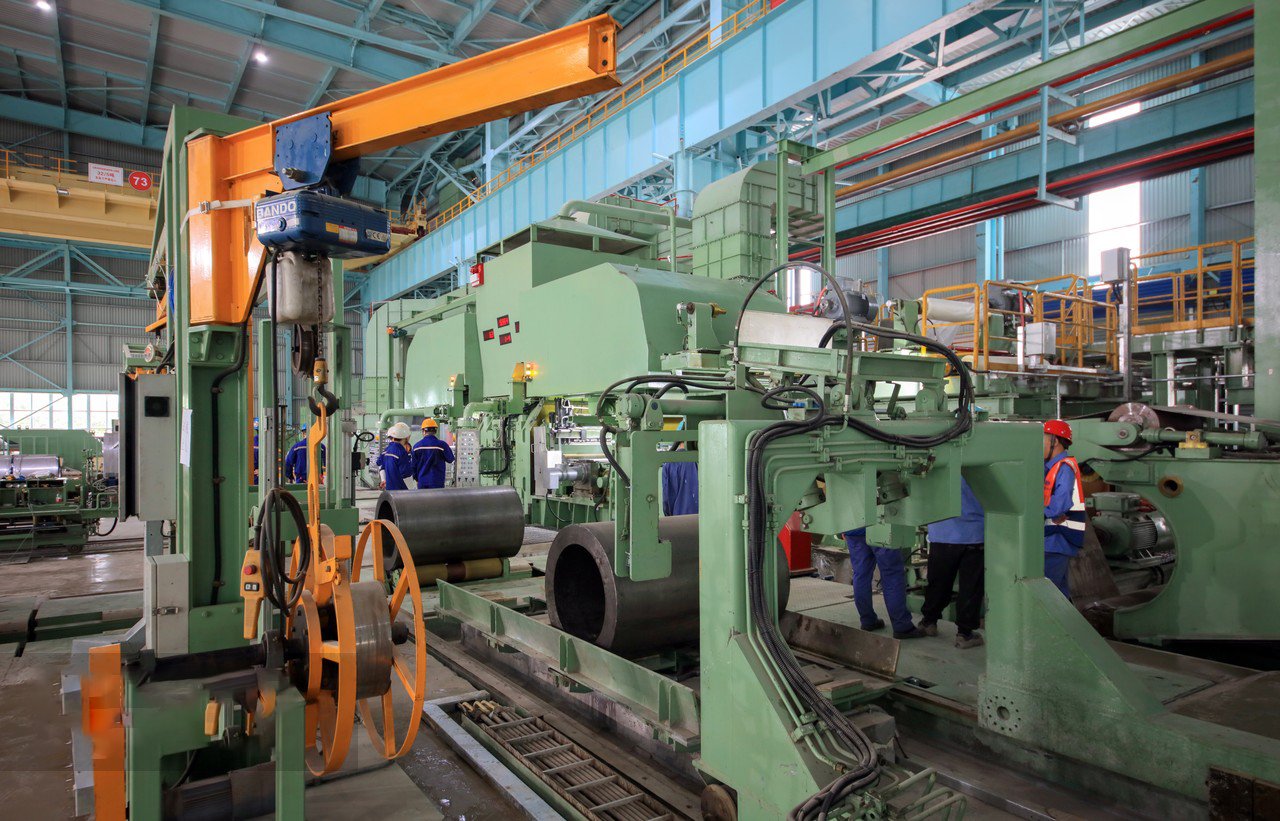
The successful execution of the 7-day production and processing plan was a masterclass in operational agility. It required a seamless flow of information and material between our different divisions, underpinned by a robust digital system and a culture of proactive problem-solving. We had to maintain our rigorous quality standards while operating at a speed far exceeding the industry norm. This phase was broken down into three critical, interlocking stages: immediate inventory allocation and logistics, synchronized production scheduling, and uncompromising quality assurance under pressure.
Leveraging Our Integrated Inventory System for a Head Start
The single biggest factor in making the 20-day timeline possible was our existing inventory. Our investment in a substantial, diversified stock of raw stainless steel coils is a core part of our business strategy, acting as a buffer against market volatility and a catalyst for rapid delivery. The moment the order was confirmed, our ERP system formally ring-fenced 350 MT of prime 316L coils for the Construtora Atlântico order. These weren't just random coils; the system identified specific batches whose Mill Test Certificates (MTCs) perfectly matched the client's required chemical and mechanical properties.
Within hours, the warehouse team had physically located and prepared these massive coils for transfer to the processing line. Each coil, weighing around 20 tons, was loaded onto our internal transport vehicles for the short journey to the cutting facility. This immediate action meant that less than 24 hours after the initial inquiry, we were already in the value-adding phase of slitting the master coils into narrower widths suitable for the final sheet dimensions.
This "inventory-first" approach shaved off what would typically be 2-4 weeks of lead time required to procure raw material from a hot-rolling mill. It was the head start that made all the difference, transforming the client's request from impossible to achievable.
Synchronized Production Scheduling and Execution
While Stream A was underway, Stream B—the production of the remaining 150 MT—began. This was not a simple task. Our cold-rolling mill runs on a tight schedule for clients around the world. Squeezing in an urgent 150 MT order required careful planning to avoid disrupting other commitments. Our production planner, using our Advanced Planning and Scheduling (APS) Software1, identified a small window by slightly postponing a less urgent stock replenishment run and optimizing the sequence of the new production.
The process began with selecting the right hot-rolled raw material, which was then subjected to the cold-rolling process to reduce its thickness to the client's precise specification. This was followed by annealing—a critical heat treatment process to restore the steel's ductility—and then pickling to remove any surface impurities. Each step was fast-tracked. We dedicated a specific annealing line and a cut-to-length line exclusively to this order for three consecutive nights.
The synchronization was key. The goal was to have the newly produced 150 MT of sheets ready for packaging at the same time as the 350 MT being processed from inventory. Our digital dashboard provided real-time visibility into both streams. I could see the progress of the cold-rolling on one screen and the cutting statistics from the inventory batch on another. This allowed us to make micro-adjustments on the fly, ensuring both streams converged perfectly on Day 7, ready for final inspection and packaging.
Quality Control: Speed Without Compromise
Executing at speed can never come at the expense of quality. If the material arrived in Brazil and failed inspection, the entire effort would be wasted. Our Quality Assurance (QA) team was embedded in the process from the very beginning. For the inventory coils, they re-verified the MTCs against the original specifications. As the sheets were being cut, they performed random dimensional checks and surface inspections every hour.
For the new production run, the scrutiny was even more intense. Our lab took samples immediately after the annealing process to conduct tensile and hardness tests, ensuring the mechanical properties met the signed-off TSS. We used digital laser micrometers on the cutting line to monitor the thickness of every sheet produced, ensuring we stayed within the tight ±0.03mm tolerance. Any sheet that fell outside this range was immediately rejected and recycled.
Before packaging, every single sheet from both streams underwent a final visual inspection under high-intensity lighting. We were looking for any potential surface defects like scratches or roller marks. This 100% inspection protocol was labor-intensive but non-negotiable. It was our guarantee to the client that despite the incredible speed of production, the quality was identical to a standard-lead-time order. The final MTC issued for the shipment was a composite document, showing test results for both the inventory batch and the new production batch, providing complete transparency and traceability.
Inventory enabled faster deliveryTrue
350 MT from existing inventory saved 2-4 weeks procurement time, proving strategic inventory's value for rapid fulfillment.
Quality checks were skipped for speedFalse
Despite tight deadlines, 100% inspection was maintained with enhanced testing protocols for both inventory and new production batches.
How Did MFY Expedite Logistics and Shipping to Ensure Timely Arrival in Brazil?
Your product is finally ready, packaged, and waiting on the factory floor. But now it faces the most uncertain part of its journey: international shipping. Will you find vessel space? Will it get stuck in customs? The final leg of the journey is often where promises of speed fall apart.
MFY expedited logistics by leveraging its pre-booked vessel space with partner shipping lines, ensuring guaranteed capacity. We managed inland trucking, container stuffing, and port delivery in-house, while our team prepared all customs documentation in parallel with production, enabling immediate clearance upon readiness.
Having all 500 tons of steel sheet packaged and ready in a record 5 days was a major victory, but it was only half the battle. The greatest challenge lay ahead: moving a shipment of this magnitude from our facility in China to the Port of Santos, Brazil, and doing so within the remaining 15 days of our 20-day commitment. This is where most supply chains falter. At MFY, our logistics team operates with the same urgency and proactivity as our production floor. They weren't just starting to look for a shipping solution when the cargo was ready; they were already steps ahead. Thanks to our strategic relationships and pre-negotiated space allocations2 with major ocean carriers like Maersk and COSCO, we had capacity reserved on a vessel departing from Shanghai in 7 days. Our team immediately confirmed our booking for twenty-five 40-foot containers, turning a potential week-long search for vessel space into a 30-minute confirmation process.
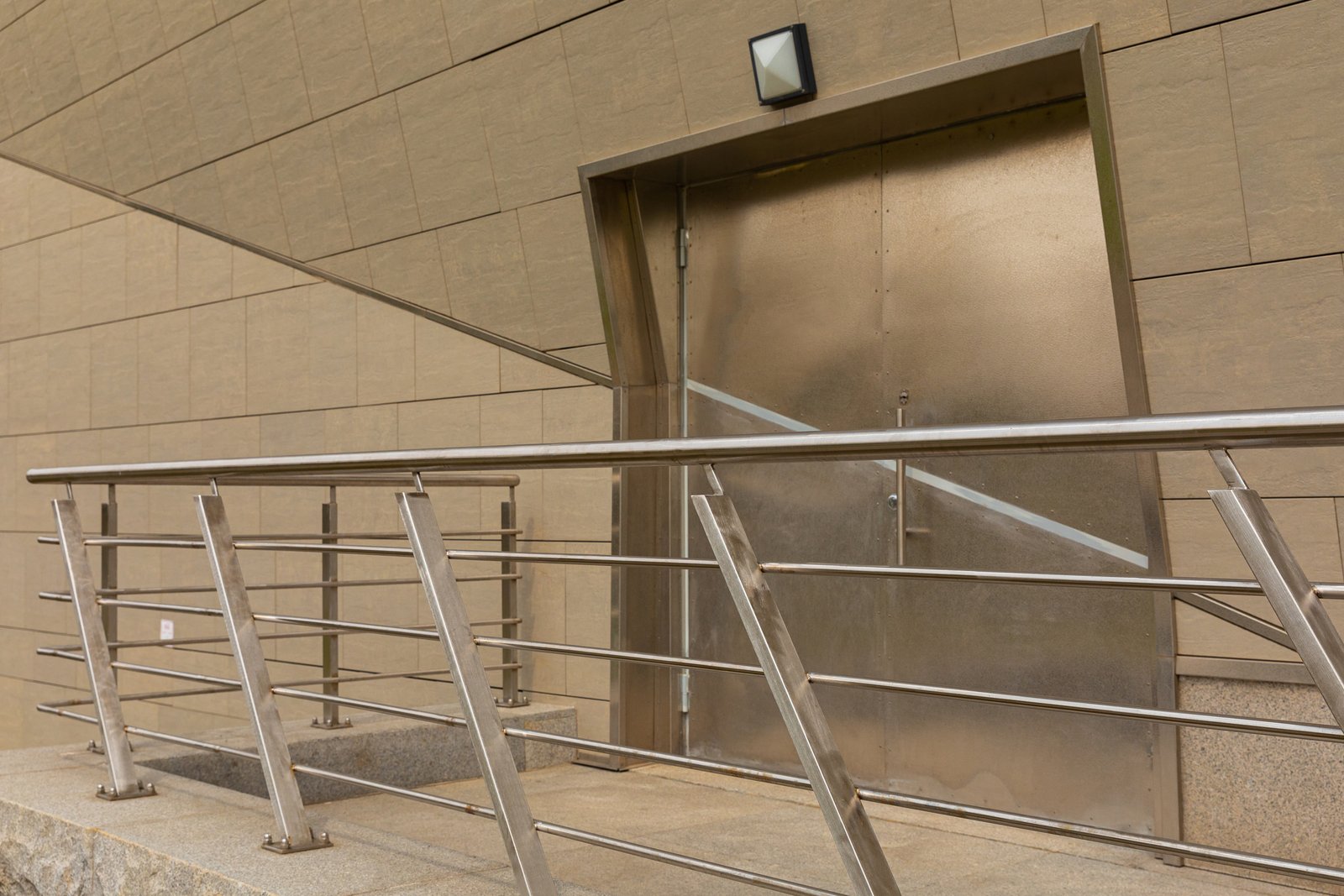
Expediting international logistics is an art form that blends proactive planning, flawless execution, and deep domain expertise. It's about eliminating every possible moment of friction in a long and complex chain of events. For the shipment to Brazil, we executed a parallel-processing logistics strategy that compressed a timeline that would typically take 3-4 weeks into just 15 days from factory door to arrival at the destination port.
Proactive Planning: The Power of Pre-Booked Capacity
The single biggest risk in ocean freight today is vessel space availability. In a volatile market, finding space for 25 containers on short notice for a specific route can be nearly impossible. This is why MFY's logistics strategy is built on partnerships. We don't just use the spot market; we have ongoing contracts with shipping lines that guarantee us a certain volume of space on key routes, such as Asia to South America. This is similar to a business traveler having a guaranteed seat on a flight. For the Brazilian order, this meant we bypassed the entire quoting and booking queue. Our logistics manager had already earmarked capacity on a vessel departing on a specific date. This proactive capacity management is what makes rapid delivery possible. It removes uncertainty and replaces it with a predictable, reliable schedule.
Integrated Execution: Managing the End-to-End Process
Our control over the process extends beyond our factory walls. We have our own in-house logistics team and a dedicated fleet of trucking partners. The moment the first containers were available, our team coordinated the complex choreography of stuffing the containers, weighing them for VGM (Verified Gross Mass) compliance, and dispatching them to the Port of Shanghai. We managed the entire inland leg, a process often outsourced to third-party forwarders. By controlling this ourselves, we ensure there are no delays between our factory and the port. The table below illustrates the efficiency gained by MFY’s integrated approach compared to a more fragmented, traditional model.
| Logistics Step | Traditional Fragmented Model | MFY's Integrated Model |
|---|---|---|
| Vessel Booking | Begins after cargo is ready (2-7 days) | Confirmed instantly using pre-booked space |
| Container Stuffing | Coordinated by 3rd party (1-2 day lag) | Scheduled and executed by in-house team |
| Inland Trucking | Outsourced, potential for delays | Managed by MFY team with dedicated partners |
| Customs Docs | Prepared after production (Sequential) | Prepared during production (Parallel) |
| Total Pre-Port Time | 7-12 Days | 3-5 Days |
Parallel Documentation: The Key to a Smooth Hand-off
A container can travel 10,000 miles, but it won't move an inch from the destination port if the paperwork isn't perfect. This is where many shippers fail. They treat documentation as the last step. We treat it as a parallel process. From the moment the order was confirmed, our trade documentation specialists began preparing the commercial invoice, packing list, certificate of origin, and bill of lading instructions. They worked directly with Construtora Atlântico's import broker in Brazil to ensure every detail was compliant with Brazilian customs regulations. By the time the last truck left our facility for the port, the full set of draft documents had already been sent to the client for review. This meant the final documents could be issued and dispatched the moment the vessel sailed, giving the client and their broker a two-week head start to prepare for customs clearance before the ship even arrived in Santos.
MFY pre-books vessel spaceTrue
MFY secures guaranteed shipping capacity through strategic partnerships with ocean carriers, eliminating last-minute space searches.
Customs docs wait until shipmentFalse
MFY prepares all customs documentation in parallel with production, not sequentially after shipment.
Post-Delivery Review: How Was Customer Satisfaction Assessed and Ensured?
The cargo has arrived, but is the job truly done? For many suppliers, a signed delivery receipt marks the end of their responsibility. This transactional approach leaves clients feeling abandoned and fails to build the trust needed for a long-term relationship.
Customer satisfaction was ensured through a multi-stage process: providing real-time shipment tracking, coordinating with a local agent for smooth customs clearance, and conducting a post-project video conference with the client's engineering and procurement teams to confirm material quality and gather direct feedback.
Our commitment to Construtora Atlântico didn't end when the vessel left the Port of Shanghai. In many ways, the final phase of service was just beginning. Throughout the 15-day sea voyage, we provided the client with daily automated tracking updates3, giving them full visibility of their cargo's journey. But we went a step further. We leveraged our partnership with a local logistics agent in Santos to act as our on-the-ground representative, helping to coordinate with the client's customs broker for a seamless import process. Upon confirmation that all 500 tons had been safely delivered to their project site, I personally scheduled a final follow-up video call4. This wasn't a sales call; it was a debriefing session. We wanted to hear directly from their project team: Did the material meet every specification? Was the packaging effective? Did our communication meet their expectations? This closing of the loop is a non-negotiable step in the MFY process.
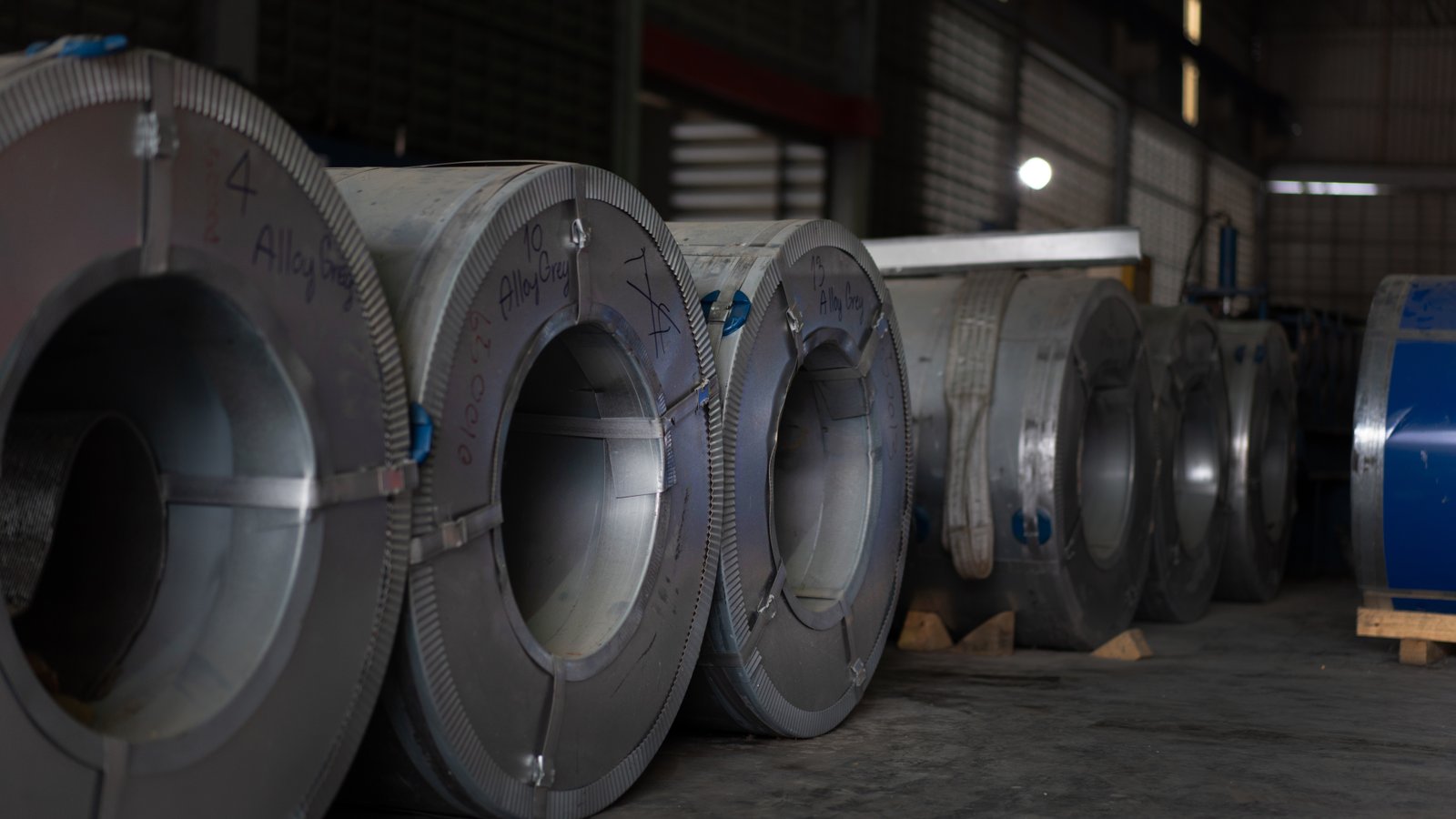
For MFY, a successful delivery is not the end goal; it is the foundation for a lasting partnership. Our post-delivery process is designed to confirm success, capture lessons learned, and demonstrate to our clients that we are as invested in their project's outcome as they are. This transforms a successful transaction into a relationship built on proven trust and reliability.
From Shipment to Project Site: Ensuring the Final Mile
The journey's "final mile"—from the destination port to the client's site—is fraught with potential complications, from customs inspections to inland transport issues. Recognizing this, our support becomes even more proactive after the vessel sails. Our team provided Construtora Atlântico’s import broker with all necessary documentation, including the original Bill of Lading and MTCs, well in advance. Our local agent in Brazil provided on-the-ground support, helping to resolve a minor query from customs regarding the classification of the steel crates5, a query that could have caused a multi-day delay if not handled swiftly by an experienced local professional. This hands-on support during the critical import phase is a value-added service that distinguishes us from suppliers who simply deliver to the port and walk away. It ensures the client’s timeline remains intact all the way to their factory door.
The Debriefing Call: A Commitment to Accountability
The final post-delivery review call is, in my opinion, the most important part of the entire process. It’s our ultimate report card. I joined the call with our Americas sales head, and we met with their Head of Procurement and the lead site engineer. The feedback was overwhelmingly positive. The engineer praised the material's consistency, noting that their welders were able to maintain a uniform process across all batches, significantly increasing their fabrication speed. He specifically mentioned how the robust crating had prevented any edge damage or surface scratches, saving them valuable time and money on rework. The Head of Procurement expressed his deep appreciation for the speed and transparency of the entire process, stating that MFY had not only salvaged their timeline but had also set a new standard for what they expected from a global supplier.
Turning Feedback into a Continuous Improvement Loop
This feedback is not just for congratulatory purposes; it's vital data that fuels our continuous improvement cycle. We formally document the client's comments in our CRM system, linking it to the order. What did they like most? The real-time tracking. What could be improved? They suggested a specific layout for the packing list to make their goods-in-receipt process even faster. This suggestion was immediately passed to our documentation team and has since been adopted as a best-practice option for other large project clients. This virtuous cycle of execution, assessment, feedback, and improvement is the engine that drives MFY's service evolution. It ensures that every successful project, like this 20-day delivery to Brazil, makes us an even better, more responsive partner for the next client.
Real-time tracking improves satisfactionTrue
The text highlights how daily automated tracking updates gave clients full visibility of their cargo's journey, which was specifically praised by the Head of Procurement.
Suppliers' responsibility ends at deliveryFalse
The article emphasizes that MFY's post-delivery process including customs support and debriefing calls demonstrates their commitment extends far beyond simple delivery.
Conclusion
This 20-day delivery to Brazil demonstrates that speed and certainty in the global steel trade are possible. It is achieved not by chance, but through a fully integrated system of people, proactive processes, and technology, proving that the right supply chain partner is a powerful competitive advantage.
-
Discover the aadvanced planning and scheduling (APS) software improve manufacturing processes ↩
-
Understand the benefits of pre-negotiated space allocations with ocean carriers ↩
-
Learn How important real-time tracking for international shipment deliveries is ↩
-
Discover the follow-up meetings important in supply chain management ↩
-
Find the common issues with customs classification of imported goods ↩
Have Questions or Need More Information?
Get in touch with us for personalized assistance and expert advice.
